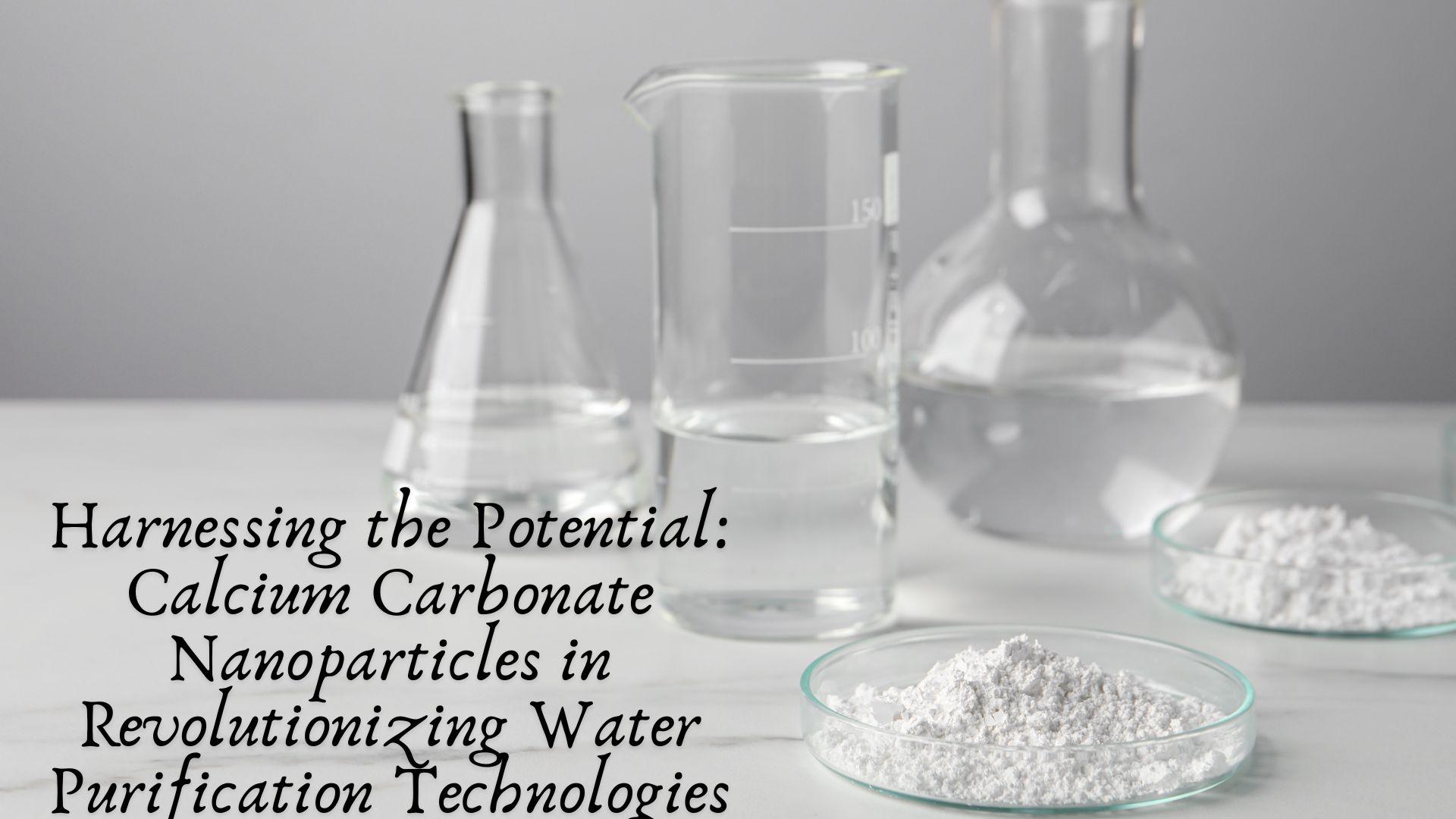In the realm of water purification, where the global demand for clean and safe water continues to rise, innovative solutions are imperative. Among these solutions, calcium carbonate nanoparticles have emerged as a promising frontier, offering a blend of efficacy, sustainability, and cost-effectiveness that could redefine the landscape of water treatment technologies.
Introduction: The Global Water Crisis and the Role of Nanotechnology
Water scarcity and contamination are pressing challenges worldwide, exacerbated by population growth, industrialization, and environmental degradation. Traditional water purification methods often fall short in efficiency, cost, or environmental impact. In response, researchers and engineers have turned to nanotechnology. Leveraging the unique properties of nanoparticles to develop advanced filtration and purification techniques.
Understanding Calcium Carbonate Nanoparticles
Calcium carbonate, a ubiquitous compound found in nature, has gained attention for its potential in nanoscale applications. At the nanosize level, calcium carbonate particles exhibit enhanced surface area-to-volume ratios and reactivity, making them ideal candidates for water treatment. These nanoparticles can be synthesized with precise control over size, shape, and surface characteristic. Which are critical for optimizing their performance in removing contaminants from water.
Mechanisms of Water Purification Using Calcium Carbonate Nanoparticles
The effectiveness of calcium carbonate nanoparticles in water purification stems from several mechanisms:
- Adsorption: Nanoparticles can adsorb pollutants such as heavy metals, organic compounds. And pathogens onto their surfaces through electrostatic interactions or chemical bonding.
- Precipitation: Calcium carbonate nanoparticles can induce the precipitation of dissolved ions and contaminants. Facilitating their removal from water through filtration or sedimentation processes.
- Catalytic Activity: Some forms of calcium carbonate nanoparticles possess catalytic properties that enable the degradation of organic pollutants or the oxidation of harmful chemicals into less toxic forms.
Applications Across Water Treatment Processes
The versatility of calcium carbonate nanoparticles extends across various water treatment processes:
- Filtration Systems: Integrated into membranes or used as additives, nanoparticles enhance the filtration efficiency by capturing contaminants at the molecular level.
- Desalination: Nanoparticles can aid in the removal of salts and other dissolved minerals, improving the efficiency of desalination processes.
- Disinfection: Through their antimicrobial properties, nanoparticles contribute to disinfection processes, reducing the microbial load in water.
Advantages Over Conventional Methods
Compared to conventional water treatment methods, calcium carbonate nanoparticles offer several distinct advantages:
- Cost-Effectiveness: Nanoparticles are often more economical due to lower material costs and reduced energy consumption in purification processes.
- Environmental Sustainability: Nanoparticles can be synthesized from abundant natural resources and can potentially reduce the use of chemical additives in water treatment.
- Scalability: The scalability of nanoparticle production allows for widespread adoption in both centralized and decentralized water treatment systems.
Challenges and Future Directions
While promising, the widespread adoption of calcium carbonate nanoparticles in water purification faces challenges:
- Regulatory Hurdles: Safety and environmental impact assessments are necessary to ensure the responsible use of nanoparticles in water treatment.
- Long-Term Stability: The stability and durability of nanoparticles under various water conditions need further investigation to ensure consistent performance over time.
- Public Perception: Addressing public concerns regarding the safety of nanoparticle-treated water is crucial for acceptance and adoption.
Conclusion: A Paradigm Shift in Water Purification
As research and development continue to unfold, calcium carbonate nanoparticles stand at the forefront of a new era in water purification technologies. Their multifaceted approach to contaminant removal, coupled with their sustainability and cost-effectiveness. Positions them as key players in addressing the global water crisis. By harnessing their potential through continued innovation and collaboration. We can aspire to achieve universal access to clean and safe water, safeguarding public health and promoting environmental stewardship for generations to come.



